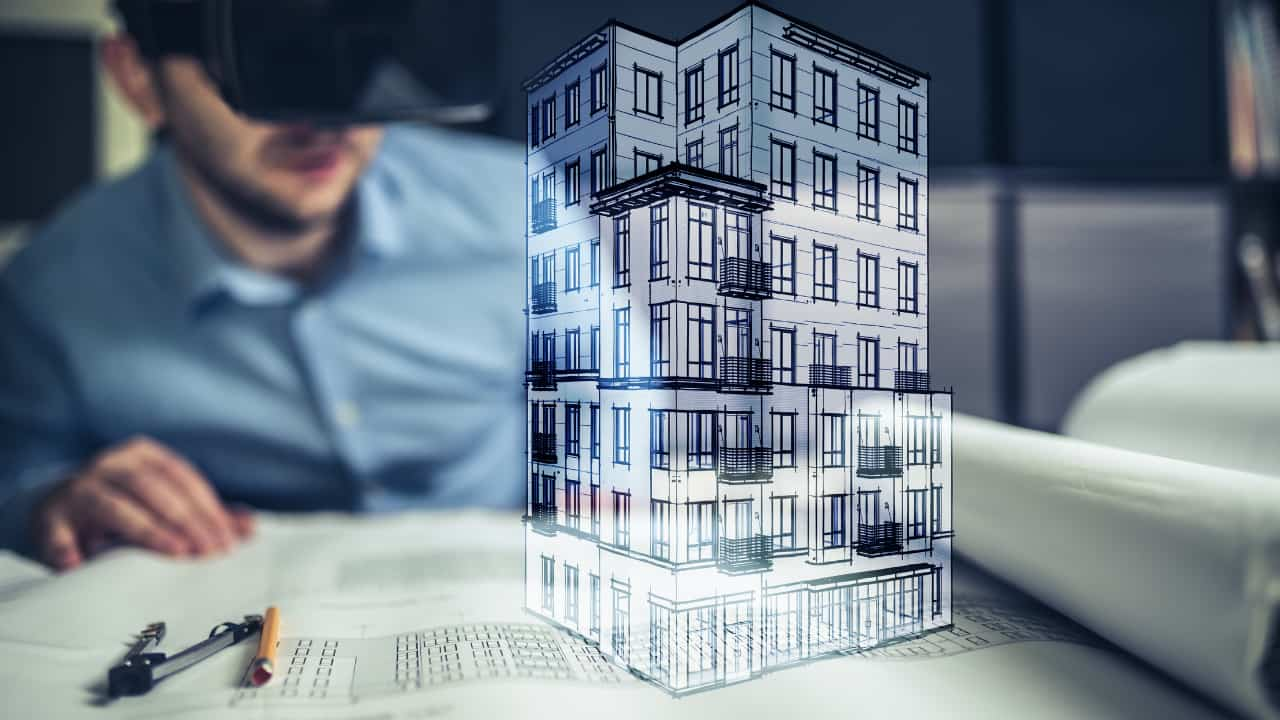Architectural design is a multifaceted discipline that goes beyond the construction of buildings. It is an art and science that involves creating spaces that are not only aesthetically pleasing but also functional and sustainable.
In this comprehensive blog post, we will delve into the essence of architectural design, exploring its definition, principles, processes, and the significant role it plays in shaping our built environment.
What is architectural design?
Architectural design can be defined as the process of conceiving, planning, and creating the physical and visual aspects of buildings and structures.
It is not limited to the external appearance but encompasses the overall functionality, spatial organization, and environmental impact of a structure. Here are key aspects that encapsulate the essence of architectural design:
1. Creativity and Innovation
- Architectural design is a creative endeavour that involves the innovative use of space, materials, and technology.
- Architects strive to push the boundaries of design, exploring new concepts and ideas to create unique and inspiring structures.
2. Functionality and Purpose
- Designing a building involves understanding its intended purpose and ensuring that the structure serves its functional requirements effectively.
- The layout and organization of spaces within a building should align with the activities and needs of its occupants.
3. Aesthetic Considerations
- Aesthetics play a crucial role in architectural design, influencing the visual appeal and overall impression of a structure.
- Architects consider proportions, balance, symmetry, and other design elements to create visually pleasing and harmonious buildings.
4. Technical Proficiency
- Architectural design requires a solid understanding of engineering principles, construction techniques, and materials.
- Architects must balance creativity with technical proficiency to ensure that their designs are not only beautiful but also structurally sound and feasible.
Principles of Architectural Design
The principles of architectural design guide architects in creating well-conceived and visually appealing structures. These principles serve as a foundation for the creative process, providing a framework for making design decisions. Here are some fundamental principles:
1. Balance
- Balance in architectural design involves the distribution of visual weight in a way that creates equilibrium.
- Symmetrical and asymmetrical balance can be used to achieve different effects, depending on the desired aesthetic.
2. Proportion
- Proportion refers to the relationship between different elements in a design.
- Achieving proper proportion ensures that elements like windows, doors, and other architectural features are appropriately sized with each other.
3. Rhythm and Repetition
- Rhythm and repetition in design create a sense of visual movement and continuity.
- Architectural elements can be repeated or varied to establish patterns that contribute to the overall design coherence.
4. Unity and Harmony
- Unity involves the integration of diverse elements into a cohesive whole.
- Harmony ensures that all components of a design work together in a way that is visually pleasing and balanced.
The Architectural Design Process
The architectural design process is a systematic approach that architects follow to transform a concept into a tangible structure. While variations exist, the typical design process includes the following stages:
1. Programming
- The first stage involves understanding the project requirements and goals.
- Architects work closely with clients to identify needs, budget constraints, and any specific preferences that will shape the design.
2. Schematic Design
- In this stage, architects develop rough sketches and conceptual drawings to explore design ideas.
- Preliminary floor plans and elevations are created to give the client an initial understanding of the proposed design.
3. Design Development
- Once a schematic design is approved, architects delve deeper into refining the details.
- Materials, colors, and specific design elements are selected, and more detailed drawings are created.
4. Construction Documents
- Detailed drawings and specifications are prepared for the construction team.
- These documents serve as a guide for contractors, ensuring that the design is accurately translated into the built form.
5. Bidding and Negotiation
- The construction documents are used to solicit bids from contractors.
- Architects may assist clients in negotiating contracts and selecting the most suitable construction team.
6. Construction Administration
- Architects play a vital role during the construction phase, ensuring that the project is built according to the design specifications.
- They may address issues that arise during construction and make adjustments as needed.
Influences on Architectural Design
Architectural design is influenced by a myriad of factors, including cultural, historical, social, and environmental considerations. Understanding these influences is essential for creating designs that are contextually relevant and responsive. Here are some key influences:
1. Cultural Context
- Architectural design often reflects the cultural context in which it is situated.
- Traditional architectural styles, materials, and forms may be incorporated to honor and celebrate local culture.
2. Historical Context
- Historical influences can be seen in architectural design, ranging from classical styles to more contemporary interpretations.
- Architects may draw inspiration from historical buildings or use design elements that evoke a particular time period.
3. Social Considerations
- Social factors, such as community needs and demographic trends, play a role in shaping architectural design.
- Sustainable and inclusive design practices are increasingly emphasized to address social and environmental challenges.
4. Environmental Sustainability
- With a growing awareness of environmental issues, architects are incorporating sustainable design principles into their work.
- Energy-efficient systems, eco-friendly materials, and green building practices contribute to environmentally responsible designs.
Trends in Architectural Design
Architectural design is a dynamic field that evolves with societal changes, technological advancements, and new design philosophies. Staying abreast of current trends is crucial for architects seeking to create forward-thinking and relevant designs. Here are some notable trends in architectural design:
1. Sustainable Design
- The emphasis on sustainability continues to grow, with architects incorporating environmentally friendly practices and materials into their designs.
- Green roofs, energy-efficient systems, and passive design strategies are becoming standard elements in architectural projects.
2. Technology Integration
- Advancements in technology, such as Building Information Modeling (BIM) and parametric design tools, are transforming the design process.
- Virtual reality and augmented reality are also being used to visualize and experience architectural designs before construction begins.
3. Adaptive Reuse
- Adaptive reuse involves repurposing existing structures for new functions, promoting sustainability and preserving architectural heritage.
- Old factories, warehouses, and even churches are being transformed into residential spaces, offices, and cultural venues.
4. Biophilic Design
- Biophilic design seeks to connect occupants with nature by incorporating natural elements into the built environment.
- Green walls, large windows, and the use of natural materials contribute to a healthier and more visually appealing living and working environment.
The Impact of Architectural Design on Society
Architectural design is not a solitary pursuit; it has a profound impact on society, influencing the way people live, work, and interact with their surroundings. Here are some ways in which architectural design shapes society:
1. Urban Planning and Development
- Architectural design plays a central role in shaping the layout and development of cities and urban areas.
- Well-designed buildings and public spaces contribute to the overall livability and functionality of a city.
2. Cultural Identity
- Architectural design contributes to the cultural identity of a community or region.
- Iconic buildings and structures become symbols that represent the history, values, and aspirations of a society.
3. Quality of Life
- Thoughtfully designed spaces enhance the quality of life for individuals and communities.
- Access to well-designed housing, public spaces, and recreational areas positively impacts the well-being of residents.
4. Economic Impact
- Architectural projects have a significant economic impact, generating employment and contributing to the growth of industries related to construction and design.
- Landmark buildings and well-designed spaces can also attract tourism and business opportunities.
Challenges in Architectural Design
While architectural design is a rewarding profession, it comes with its share of challenges. Overcoming these challenges is essential for creating successful and enduring designs. Here are some common challenges faced by architects:
1. Budget Constraints
- Balancing aesthetic aspirations with budgetary limitations is a constant challenge in architectural design.
- Architects must find creative solutions to deliver high-quality designs within financial constraints.
2. Regulatory Compliance
- Navigating complex building codes, zoning regulations, and permitting processes can be time-consuming and challenging.
- Architects must stay informed about local regulations and ensure that their designs comply with all applicable codes.
3. Technological Learning Curve
- Keeping up with rapidly evolving design technologies requires ongoing learning and adaptation.
- Architects need to invest time in mastering new tools and staying informed about emerging trends in the industry.
4. Sustainability Integration
- While sustainability is a growing focus, integrating green design principles into projects can be challenging.
- Architects must balance environmental considerations with other design priorities and client preferences.
FAQ’s
1. What is architectural design?
Architectural design is the process of conceiving, planning, and creating the physical and visual aspects of buildings and structures. It involves a combination of creativity, functionality, and technical proficiency to produce aesthetically pleasing, functional, and sustainable spaces.
2. What are the key principles of architectural design?
The key principles of architectural design include balance, proportion, rhythm and repetition, and unity and harmony. These principles guide architects in creating well-conceived and visually appealing structures by ensuring a balance of visual elements and a harmonious integration of diverse components.
3. How does architectural design impact society?
Architectural design has a profound impact on society by influencing urban planning, contributing to cultural identity, enhancing the quality of life, and generating economic opportunities. Well-designed buildings and public spaces positively shape communities and contribute to their overall well-being.
4. What are the challenges in architectural design?
Challenges in architectural design include budget constraints, regulatory compliance, the learning curve of evolving technologies, and the integration of sustainable design principles. Architects must navigate these challenges to deliver successful and enduring designs.
5. How has technology influenced architectural design?
Technology has significantly influenced architectural design by introducing tools such as Building Information Modeling (BIM) and parametric design, streamlining the design process. Advancements in virtual reality and augmented reality have also transformed the way architects visualize and present their designs.
Conclusion
Architectural design is a captivating and influential field that shapes the physical and visual landscape of our world. From the creative exploration of design concepts to the practical implementation of construction projects, architects play a pivotal role in creating the built environment we inhabit.
Understanding the principles, processes, and influences on architectural design provides insight into the complexities of this profession and the impact it has on society.
Whether you’re an aspiring architect, a design enthusiast, or someone curious about the world of architecture, this exploration of architectural design serves as a comprehensive guide to the art and science of building beautiful, functional, and sustainable spaces.





